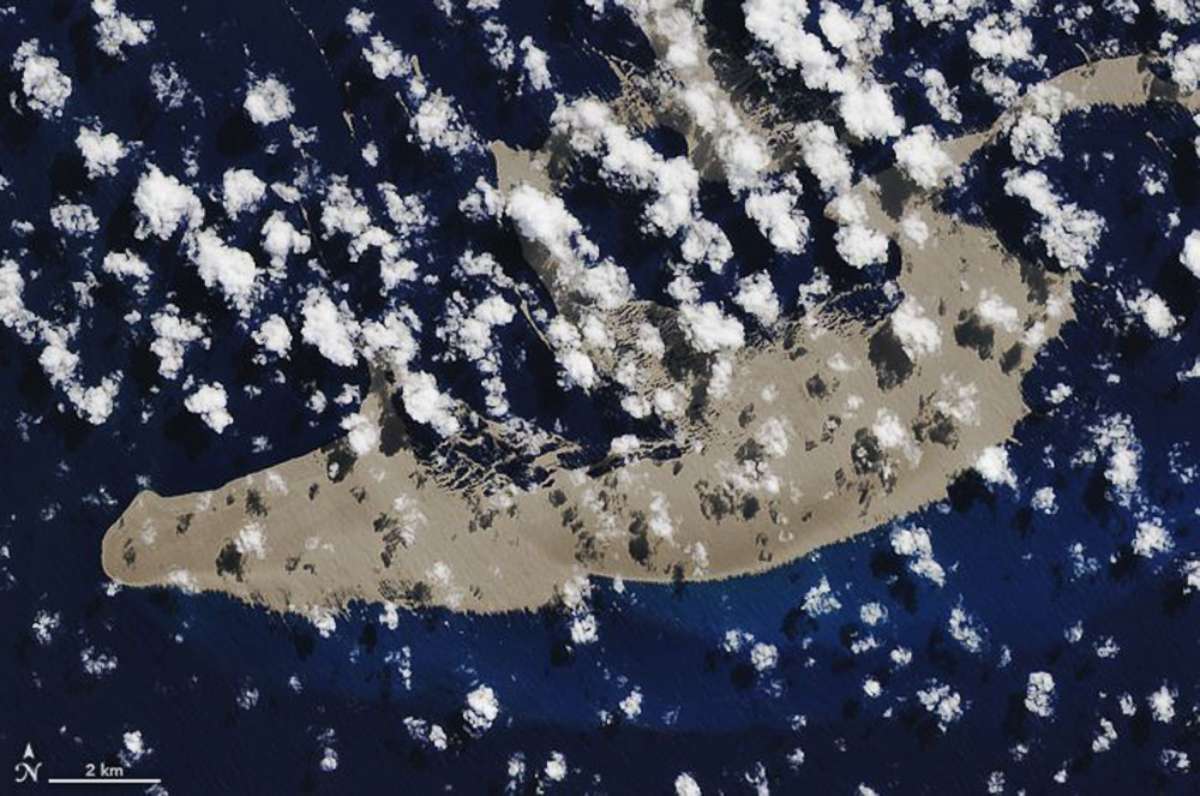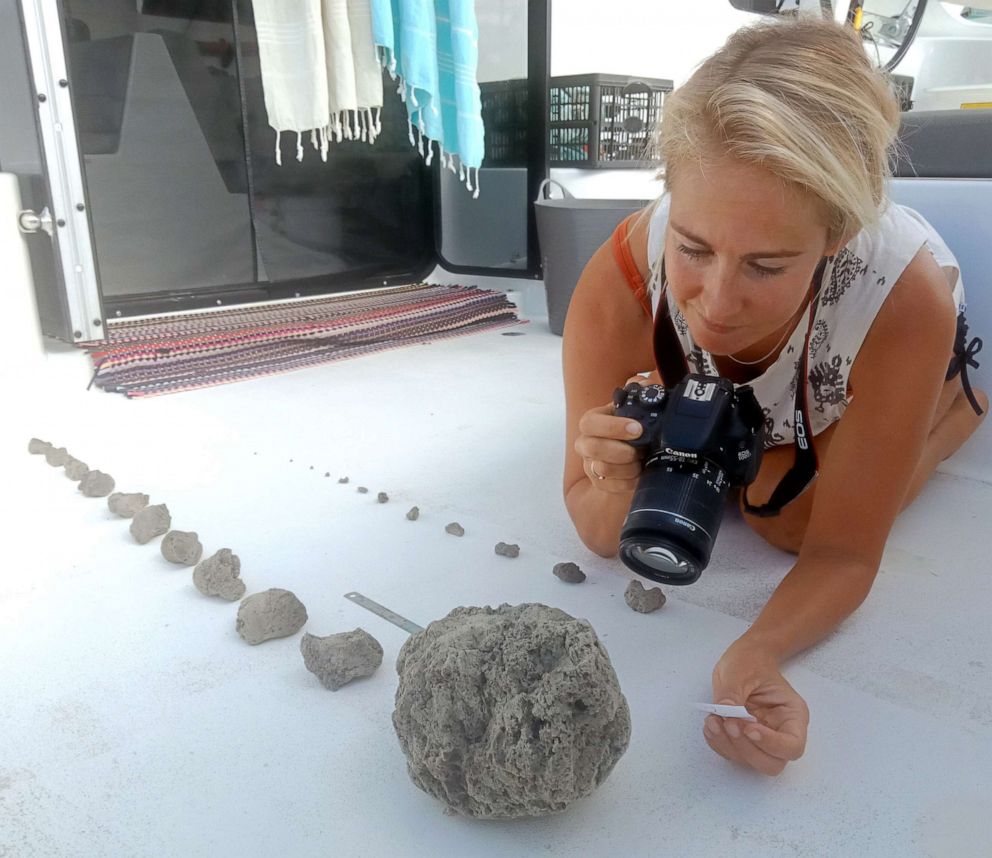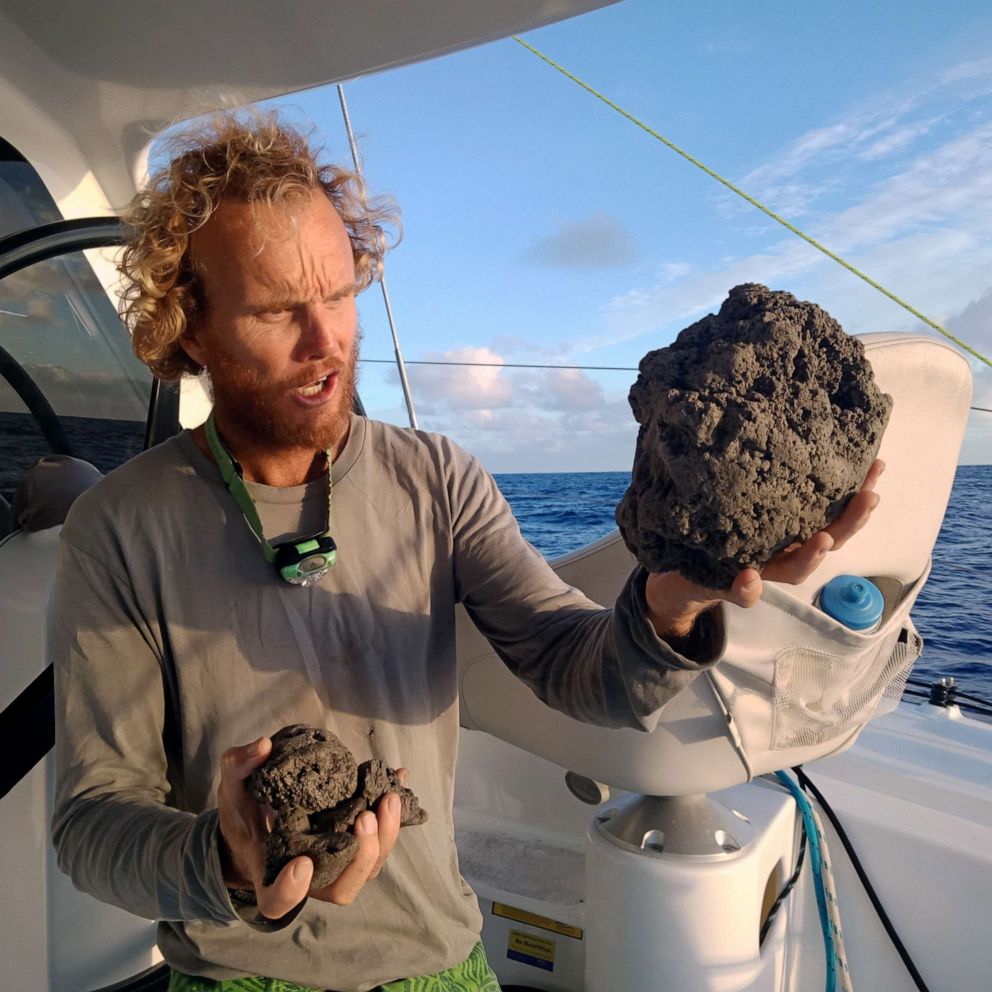Sailors encounter floating pumice 'raft' drifting across the Pacific Ocean
“The rubble slick went as far as we could see in the moonlight."
London -- Sailors in the South Pacific were surprised this month to find themselves sailing through a sea of stone.
Australian couple Michael and Larissa Hoult were on their yacht en route to Fiji from Vava'u when they entered a 150-square-kilometer “pumice raft” – a floating mass of pumice stone believed to come from an underwater volcanic eruption.
“We had heard the previous day on email of pumice fields," the couple wrote on Cruiser Sat Net, an online blog for sailors. As they approached the field, they started seeing floating rocks, some as large as tennis balls.
“We had faint but distinct smell of sulfur,” they wrote.

Sometime later they “entered a total rock rubble slick made up of pumice stones from marble to basketball size. The waves were knocked back to almost calm and the boat was slowed to 1 knot [just over 1 mph]. The rubble slick went as far as we could see in the moonlight.”
The couple posted photos of the rocks they had collected on Facebook and Instagram.
"I think Liss is enjoying the Science side of this... We have been contacted by a couple of Earth Science and Geology Professors from a couple of universities who study Volcanic and Pumice events looking for more details, photos and samples of the Pumice ROAM collected the other night," Michael Hoult write.

Worried about rock damage to their boat, the couple quickly charted a course out of the pumice field. The boat suffered some minor damage but the Hoults said it could have been a lot worse. On the bright side, “the hull has never been cleaner. It's literally been exfoliated!” they said.
Pumice stone is a highly porous, lightweight volcanic rock, which is why it was able to float to the surface of the ocean. An underwater volcano off the coast of Tonga is thought to have erupted around Aug. 7, according to the blog Volcano Discovery. A NASA satellite first captured an image of the field on Aug. 9, according to the NASA Earth Observatory, which shows the raft to be larger than the island of Manhattan.

Another couple, also on a yacht in the area, described the sensation of sailing through the patch of rock in an interview with the BBC.
“It was like a cement mixer,” said Shannon Lenz, describing the sound she heard while sailing through the pumice. “It was just grinding.”
Lenz posted a video on YouTube of the trip through the pumice.
Pumice rafts also act as a mechanism to bring new species to the world's reefs, according to marine scientists.
For their part, Michael and Larissa Hoult wrote on Facebook that they “hope that all the news coverage can spread some positive outlook for the Great Barrier Reef in that the pumice rocks will bring new coral growth.”



